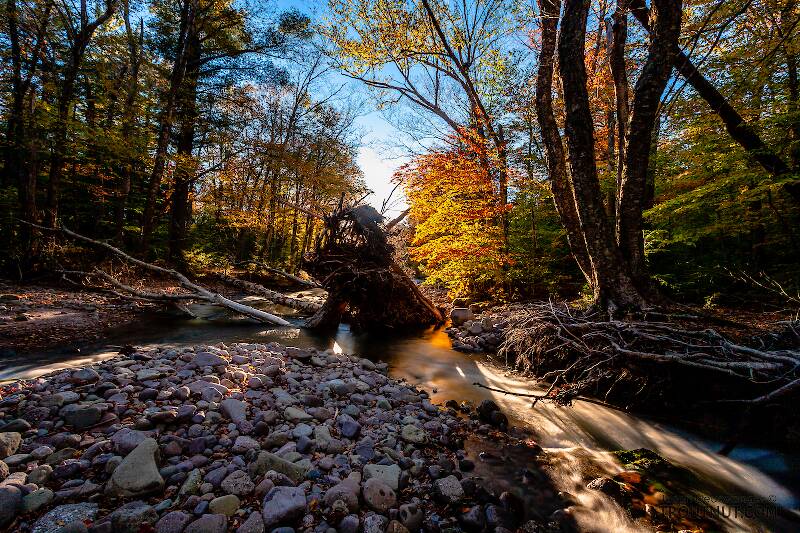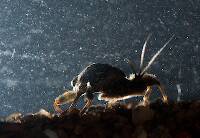
Hex Mayflies
Hexagenia limbata
The famous nocturnal Hex hatch of the Midwest (and a few other lucky locations) stirs to the surface mythically large brown trout that only touch streamers for the rest of the year.
Featured on the forum

This is the first of it's family I've seen, collected from a tiny, fishless stream in the Cascades. The three species of this genus all live in the Northwest and are predators that primarily eat stonefly nymphs Merritt R.W., Cummins, K.W., and Berg, M.B. (2019).

Troutnut is a project started in 2003 by salmonid ecologist Jason "Troutnut" Neuswanger to help anglers and
fly tyers unabashedly embrace the entomological side of the sport. Learn more about Troutnut or
support the project for an enhanced experience here.
Willmilne on May 18, 2009May 18th, 2009, 12:58 pm EDT
Hi
Looks like I have been bitten by the bug:))
I am considering buying Merrit and Cummins 4th Ed. for an ID reference.. is this the standard?
I am also getting the sense I need a stereo microscope to aid/complement the above... any suggestions under $ 500.00 that would be a ( I know I'm cheap but..) reasonable buy?
Will
Looks like I have been bitten by the bug:))
I am considering buying Merrit and Cummins 4th Ed. for an ID reference.. is this the standard?
I am also getting the sense I need a stereo microscope to aid/complement the above... any suggestions under $ 500.00 that would be a ( I know I'm cheap but..) reasonable buy?
Will
Konchu on May 19, 2009May 19th, 2009, 6:05 am EDT
The reference depends on what level you want to go to.
Good scopes are hard to find for a reasonable price. Finding a good used one is something to try. If you're near a university, sometimes things can be found at salvage sales.
Otherwise, you could try something new from a vendor such as BioQuip. That would give you a good idea about prices.
Good scopes are hard to find for a reasonable price. Finding a good used one is something to try. If you're near a university, sometimes things can be found at salvage sales.
Otherwise, you could try something new from a vendor such as BioQuip. That would give you a good idea about prices.
Willmilne on May 19, 2009May 19th, 2009, 12:03 pm EDT
Hi
I can usually get to the family level , but would like to get the species level. The references I have are fly fishing related and therefore limited by that fact. Hence the thought of Merrit and Cummins as a better resource.
Any suggestions on what magnification range is the most usefull for mayfly/stonefly/caddis keying.
Will
I can usually get to the family level , but would like to get the species level. The references I have are fly fishing related and therefore limited by that fact. Hence the thought of Merrit and Cummins as a better resource.
Any suggestions on what magnification range is the most usefull for mayfly/stonefly/caddis keying.
Will
GONZO on May 19, 2009May 19th, 2009, 12:47 pm EDT
Unless I am mistaken, Merritt and Cummins will usually leave you at genus. Most of the exceptions would probably be fairly unique or monotypical species. Finding reliable species level keys often requires researching the latest scientific papers, and even then you will find instances where up-to-date keys may not exist or may be limited to certain stages (male imagos or nymphs, for example). There are very few shortcuts to species level identification.
However, M&C would certainly be a good place to start and a great help in narrowing down the possibilities--I often wish I had a copy. There are also some useful online resources. If you're not averse to wading through a fair amount of scientific jargon, the FAMU Ephemeroptera Galactica collection of scientific papers is a tremendous resource, though limited primarily to mayfly research.
However, M&C would certainly be a good place to start and a great help in narrowing down the possibilities--I often wish I had a copy. There are also some useful online resources. If you're not averse to wading through a fair amount of scientific jargon, the FAMU Ephemeroptera Galactica collection of scientific papers is a tremendous resource, though limited primarily to mayfly research.
Troutnut on May 20, 2009May 20th, 2009, 1:41 am EDT
Gonzo's right... Merritt & Cummins usually goes just to genus level. For that, it's as good a reference as you can get.
For species, there's usually no option except to build a large collection of obscure scientific papers. Even having done that, some of them are still mysterious to me.
For species, there's usually no option except to build a large collection of obscure scientific papers. Even having done that, some of them are still mysterious to me.
Jason Neuswanger, Ph.D.
Troutnut and salmonid ecologist
Troutnut and salmonid ecologist
Quick Reply
Related Discussions
Topic
Replies
Last Reply
0
Mar 31, 2008
by Fish4va
by Fish4va
6
Apr 25, 2007
by Troutnut
by Troutnut
4
Feb 1, 2009
by Taxon
by Taxon
3
Oct 30, 2009
by Doublezz105
by Doublezz105
3
Oct 4, 2006
by GONZO
by GONZO
2
May 22, 2009
by Konchu
by Konchu




